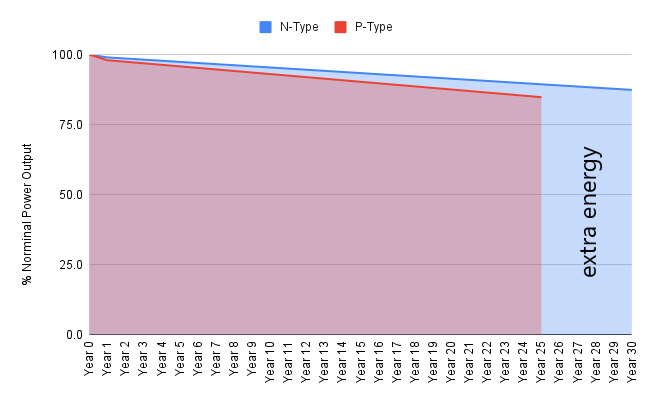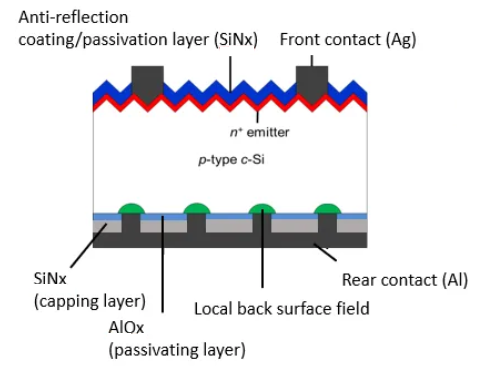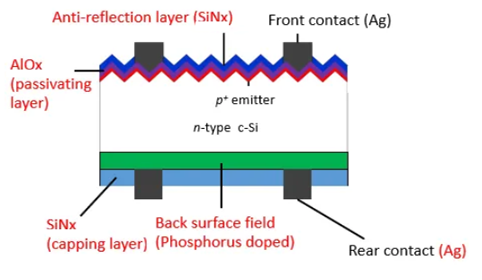Which type of Jinko Solar modules should you choose for your projects?
The Jinko Company
JinkoSolar is known around the world for producing high-quality modules. The company sells and distributes solar solutions to a wide range of customers internationally for over 15 years. Using their proven experience in the solar energy sector, JinkoSolar has created a vertically integrated solar product value chain with a yearly capacity of 22 GW for mono wafers, 11 GW for solar cells, and 31 GW for solar modules (as of December 31, 2020).

Jinko’s Tiger Series
From 2020 Jinko’s focus on the Tiger module means adopting the advanced technology of multi-busbar + Tiling Ribbon + half cut with the high-efficiency Jinko cell.
There are 4 sub-series for Tiger modules that include:
- Tiger module: P-type, 163 mm cells
- Tiger N-type module: N-type, 163 mm cells
- Tiger LM module: P-type, 166 mm cells
- Tiger Pro module: P-type, 182 mm cells

| Tiger | Tiger N-Type | Tiger LM | Tiger Pro | |
| Cell type | P-type | N-Type | P-Type | P-Type |
| Cell size | 163 mm | 163 mm | 166 mm | 182 mm |
| Module configuration | 66 cells: 390 – 410W 78 cells: 460 – 480W |
60 cells: 355 – 375W 66 cells: 390 – 410W Black Module: 60 cells: 345 – 365W 66 cells: 385 – 405W |
72 cells: 435 – 455W | 54 cells: 395 – 415W 60 cells: 440 – 460W 72 cells: 530 – 550W |
| Module Length [mm] | 66 cells: 1855 78 cells: 2182 |
60 cells: 1692 66 cells: 1855 |
72 cells: 2096 | 54 cells: 1722 60 cells: 1903 72 cells: 2274 |
| Module Width [mm] | 66 cells: 1029 78 cells: 1029 |
60 cells: 1029 66 cells: 1029 |
72 cells: 1039 | 54 cells: 1134 60 cells: 1134 72 cells: 1134 |
| Module Weight [kg] | 66 cells: 20.8 78 cells: 25.0 |
60 cells: 19 66 cells: 20.8 |
72 cells: 25.1 | 54 cells: 22 60 cells: 24.2 72 cells: 28.9 |
| Max. Efficiency | 21.48% | 21.54% | 20.89% | 21.33% |
Advantage N-Type vs P-Type
The N-Type module refers to the N-layer (substrate) found inside the PV cells that are thicker than the P-layer. The main difference between P-type and N-type solar cells is the number of electrons. A P-type cell usually dopes its silicon wafer with boron, which has one less electron than silicon (making the cell positively charged). An N-type cell is doped with phosphorus, which has one more electron than silicon (making the cell negatively charged). By changing the substrate from P-type to N-type, the cell suffers less repercussions when exposed to sun and oxygen in the air, therefore reducing the degradation rate significantly.
P-Type PERC cell concept
N-Type PERT cell concept
For Tiger P-type mono-crystalline modules:
- Degradation for the 1st year is 2.0% then for each year after 0.55% until the end of the performance warranty period concluding year 25. The Actual Power Output at the end of the warranty shall be no less than 84.8% of the Nominal Power Output.
For Tiger N-type mono-crystalline modules:
- Degradation for the 1st year is 1.0% then for each year after 0.4% until the end of the performance warranty period concluding year 30. The Actual Power Output at the end of the warranty shall be no less than 87.4% of the Nominal Power Output.
The graph below shows that an installation with N-type modules will benefit from a longer performance warranty. The extra blue area indicates that the installation with N-type modules will have more than 15% guaranteed energy compared to P-type modules.

This does not necessarily mean higher profit from using N-type modules. The N-type module price is about 10-15% higher than the P-type with the same power output. For that reason, the extra energy will take several years to repay for the extra investment. Actual payback time will depend on many factors such as: Location of installation, condition of installation, electric price, and the annual increase in the price of electricity. Depending on the specific situation, this payback time may take 5 to 10 years. Therefore, the installer should consider all the mentioned factors before choosing P-type or N-type modules and determine which is more feasible for any intended project.
It is worth mentioning that the N-type modules usually come with a longer product warranty (15 to 25 years) compared to the 12 year market standard. This is a good reason to consider using the N-type module, especially for residential projects.
N-Type modules still represent a relatively small percentage of the market but as more key players like Jinko enter the market and due to advantages in degradation rates and warranty periods, we can expect N-type modules will eventually grab major market shares.

Offer from Solarity
Solarity, has begun a long-term cooperation with Jinko Solar and we are adding the Tiger 66TR, both P-type modules with a power output 390W and N-type modules with a power output 400W to our portfolio. And for the Ukraine market we are also offering the Tiger Pro 72HC 530W. You are welcome to visit our shop for more information about price, availability, and further support. If you need any additional help, do not hesitate to contact us.
Posts you might like:

Subscribe to our newsletter
so that you don’t miss any news!











